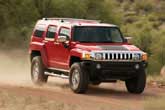Recent Articles
Popular Makes
Body Types
When Fuel Economy Matters
As prices climb so does the desire for more fuel efficient cars
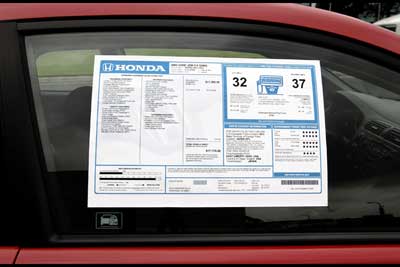
Never thought it would get to this. Did you? Three dollars a gallon just to get down the road. The brooding outlook says that we’ll feel the pain of four dollars before we get any significant relief from high prices. And to think that once, not so long ago, we thought two bucks a gallon was too much, and we swore that we’d never be like those Europeans, with their dirty little diesels and tiny toy cars. It sure seems as though we’re headed that way now, thanks to foreign oil barons, hurricanes and the unabated greed of oil companies. Though most experts expect the price of fuel to stabilize – even decrease slightly – before the end of the year, chances are that it won’t be long before spring price increases send the price hurtling upward once again. The result is a gasoline double whammy, a merging of increases with no relief in sight. It's not a question of if – only when. In fact, the only real question is, will we continue to purchase vehicles that get less than 20 mpg when the price of fuel reaches $4 per? There’s evidence that it’s happening now. According to industry trade journal Automotive News, August saw a 10.1-percent increase in sales, but a 1.6-percent decrease in light truck sales. Vehicles such as the Chevrolet Silverado took big hits last month, as did the Ford Explorer, while the Toyota Prius and other small cars sold in droves. Judging from August sales, and the continued increase of gas prices, it’s clear that the shift toward more fuel efficient cars has already begun.
MPG: True or False?
True or False? A road test in the Toyota Prius consistently registered a combined fuel economy of 45, compared to its listed EPA rating of 60/51, and the Ford Escape Hybrid registered 25 combined city and highway miles per gallon – though the EPA fuel economy is listed at 31/27. You look at the window sticker and it reads “35 mpg,” so you think to yourself – why, that’s great, perfect, a nice car with great gas mileage. Sold! Not so fast. The numbers that more Americans are considering seriously when it comes to the purchase of a vehicle may not be very accurate. According to Autobytel’s own analysis of recent vehicles and a report from the EPA’s rated miles per gallon can be much greater than what you will get on the road, especially when it comes to hybrid vehicles. According to they found that the EPA’s estimates ran 35 – 50 percent higher than the vehicle’s actual fuel efficiency. Hybrids averaged 19 miles per gallon less than their EPA ratings, according to the publication, and ratings were too low for 90 percent of the vehicles tested. Autobytel’s own road tests support these findings. For example, a road test in the Toyota Prius consistently registered a combined fuel economy of 45, compared to its listed EPA rating of 60/51, and the Ford Escape Hybrid registered just 25 combined city and highway miles per gallon – though the EPA fuel economy is listed at 31/27. Worse yet is the new Toyota Highlander, whose “real world” miles per gallon came in at 19.8, compared to a stickered EPA estimate of 31/27. The same holds true for traditional powertrains – though the difference is generally not quite so stark. Part of the reason for the difference lays in the laboratory approach the EPA uses to test its vehicles. According to fueleconomy.gov, “the vehicle's drive wheels are placed on a machine called a dynamometer that simulates the driving environment—much like an exercise bike simulates cycling. The energy required to move the rollers can be adjusted to account for aerodynamic forces and the vehicle's weight. On the dynamometer, a professional driver runs the vehicle through a standardized driving routine, or schedule, which simulates “typical” trips in the city or on the highway.” Ask Lance Armstrong if a trip on an exercise bike closely approximates the experience of riding up the Alps. There are likely to be some pretty big differences, of course. But no matter what the reason, many car buyers will be unpleasantly surprised when they realize that they aren’t getting the kind of savings they thought they’d enjoy. And while the kind of fuel consumption you manage depends greatly on your driving style, the quality of the road and the types of traffic you encounter, the variance between rated miles per gallon and “real world” numbers makes a difference, especially with gas topping $3 a gallon.
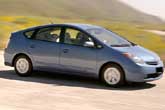
Now vs. Then
Now vs. Then Same car, same fuel efficiency, but it costs 562 dollars more – a 51 percent increase – to drive those same 15,000 miles every year. And that dollar figure jumps when the vehicle gets bigger. To listen to the media and the man on the street, one would think that the spikes in fuel prices have had a catastrophic impact on our economy. They would be right. Consider that, thanks to the price of oil – and subsequent lift in gas prices – the cost of living has zoomed. Everything’s up, from heating to hamburgers, gas prices being the most visible cost increase, thus drawing the most ire from consumers. Within the context of today compared to last year, drivers are getting hit with a substantial fuel “tax.” Say you’re driving around in a Toyota Camry. In 2004, a new Toyota Camry conserved fuel at a clip of around 28 miles per gallon. That’s based on what the EPA calls “Your MPG,” a feature where drivers input their own average fuel economy. One year later, the mpg number stays the same. Same car, same fuel efficiency, but it costs 562 dollars more – a 51 percent increase – --to drive those same 15,000 miles. And that dollar figure jumps when the vehicle gets bigger:
2004 Toyota Camry – 28 mpg: $2.05 per gallon: $1,098 2005 Toyota Camry – 28 mpg: $3.10 per gallon: $1,660 (Toyota Camry with four-cylinder engine and automatic transmission) Gas price increase: $562 2004 Ford F-150 – 15 mpg: $2.05 per gallon: $2,050 2005 Ford F-150 – 15 mpg: $3.10 per gallon: $3,100 (Ford F-150 with 5.4-liter V8 engine, automatic transmission) Gas price increase: $1,050 2004 Chevrolet Tahoe – 13 mpg: $2.05 per gallon: $2,365 2005 Chevrolet Tahoe – 13 mpg: $3.10 per gallon: $3,576 (Chevrolet Tahoe with 5.3-liter engine, automatic transmission) Gas price increase: $1,211 Obviously, those with more fuel-efficient vehicles have fared better since the price hike. But even with a four-cylinder Camry, the annual “tax” is almost $600, virtually the same as making an extra car payment or two. With consumers suffering from price increases in virtually all other areas of life, that $600 makes a big difference. And if you’re driving a truck or a large SUV, it hurts much more, to the tune of $1,000 or more per year. Most people don’t have an extra $1,000 lying around the house to feed a gas hog.
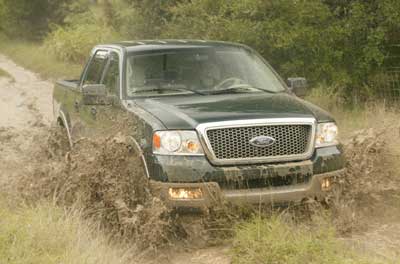
What You Can Do
What You Can Do Mainly, watch how you drive: Stay away from hot burnouts and fancy moves – stay steady, stay in your lane and keep your car in working order. Thanks to our preoccupation with everything big and powerful, many commuters are driving around in large suvs that average 13 miles per gallon or worse. Right now, many of these drivers are growing frustrated, watching the miles go by, the gas needle spin and the price of fuel soar. If you can relate, there are several steps you can take to reduce the hit to your pocketbook.
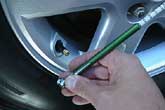
Real World Impact
Real World Impact If your commute is long or fraught with traffic, and you’re driving a gas guzzler, you may save money at the pump depending on what the lease payment is for a compact. The recent upswing in fuel prices is a shock to the system because it happened so quickly. Last June 13, a typical 25-mile daily commute in a 2005 Chevrolet Tahoe would have cost California drivers around $4.50, based on an average gas price of $2.33. Two months later, on September 12, the same commute cost almost $6 as gas prices crested $3.00 per gallon. Look at it this way: What was once a small, inconsequential expense on a daily basis suddenly became significant. And that’s without that awful bloated feeling. Fact is, gas prices are so bad it makes people want to go out and buy a new car. Seriously – if your commute is long or fraught with traffic, and you’re driving a gas guzzler, you may save money at the pump depending on what the lease payment is for a compact. If you have a typically long, 70-mile commute at current gas prices, you’re paying around $18 a day if your SUV makes 12 miles to the gallon. You can save around $12 per day if you switch to a compact car that gets 35 miles per gallon – it costs only $6 a day to get to work and go home. Spread out over a 20 day month (Monday – Friday) that’s a $237 dollar savings – not enough to warrant the purchase of a third vehicle, perhaps, but enough to put large SUV owners in the unenviable position of having to choose between losing money at the pump or by dumping their vehicle. Indeed, those who recently got great deals on large SUVs may find themselves stuck paying hundreds of dollars more at the pump.
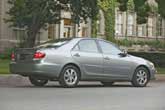
Tipping Point
Tipping Point If fuel prices go much higher, forsaking SUVs for more fuel efficient cars will become something most everyone will want to think hard about. Just when that shift happens, however, depends on many factors, but based on the increase in dollars spent on gasoline, we’re either already there or are nearing the tipping point. Again using the Toyota Camry, Ford F-150 and Chevy Tahoe as examples, and assuming a 15,000 annual mileage use, we’ve compared today’s fuel cost of around $3.10 per gallon to $4.10 per gallon, and matched that to what we were paying per mile this time last year: 2004 Toyota Camry – 28 mpg: $2.04 per gallon: $1,092 2005 Toyota Camry – 28 mpg: $3.10 per gallon: $1,660 2005 Toyota Camry – 28 mpg: $4.10 per gallon: $2,196 (Toyota Camry with four cylinder engine and automatic transmission) If you bought that Camry new in 2004, you can see how fuel prices are adding to the cost of keeping a car, and this doesn’t factor roads traveled or wear and tear that lowers fuel economy. 2004 Ford F-150 – 15 mpg: $2.04 per gallon: $2,040 2005 Ford F-150 – 15 mpg: $3.10 per gallon: $3,100 2005 Ford F-150 – 15 mpg: $4.10 per gallon: $4,100 (Ford F-150 with 5.4-liter V8 engine, automatic transmission) Compared to last year, when Ford truck owners were paying $170 a month for gas, they’ll be paying almost double that when gas reaches $4.00 per gallon. Chevy Tahoe drivers get it even worse. 2004 Chevrolet Tahoe – 13 mpg: $2.04 per gallon: $2,353 2005 Chevrolet Tahoe – 13 mpg: $3.10 per gallon: $3,576 2005 Chevrolet Tahoe – 13 mpg: $4.10 per gallon: $4,730 *Chevrolet Tahoe with 5.3-liter engine, automatic transmission So here we are, at last – the tipping point, at least for large SUV owners. When gasoline hits $4 per gallon, those drivers who make their way to and from work in a vehicle that averages 13 mpg or less will be paying around $200 a month more than in 2004. That’s straight math, so real world dollars will very likely be more. Considering the amount of buyers who have jumped into these fuel efficient vehicles over the last two years, as automakers such as GM and Ford have heavily discounted these most profitable staples of their lineups, and the problem becomes acute for many who find themselves in a car that gulps gas – and dollars – and no feasible financial way out of the nightmare.
Photos courtesy of the auto manufacturers
